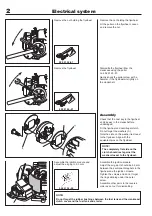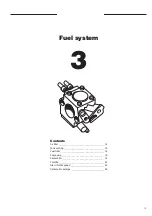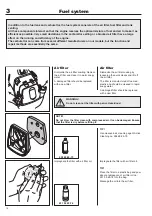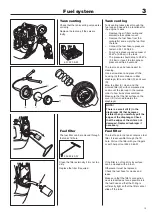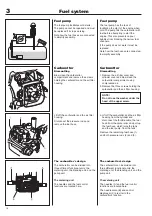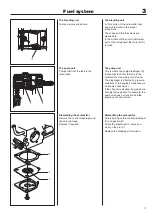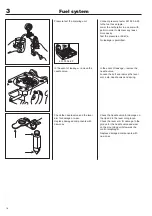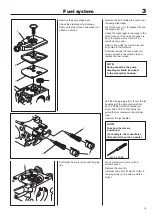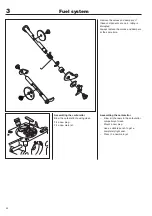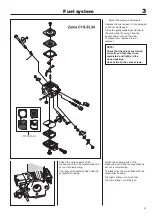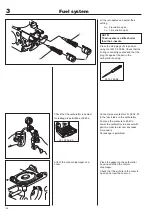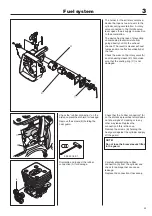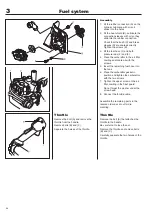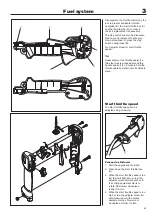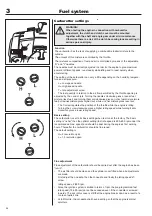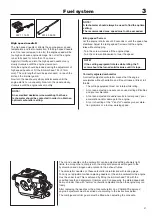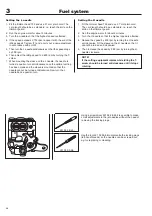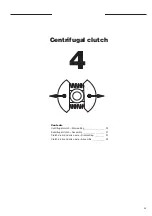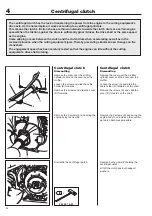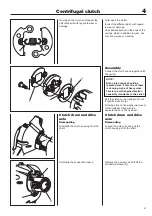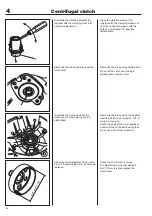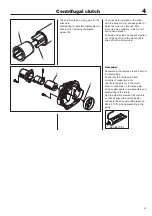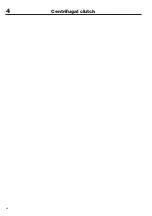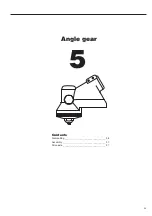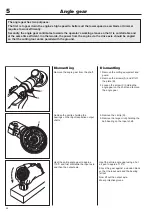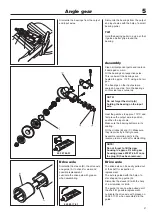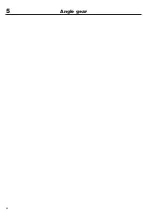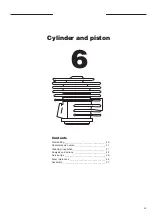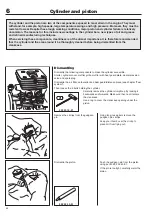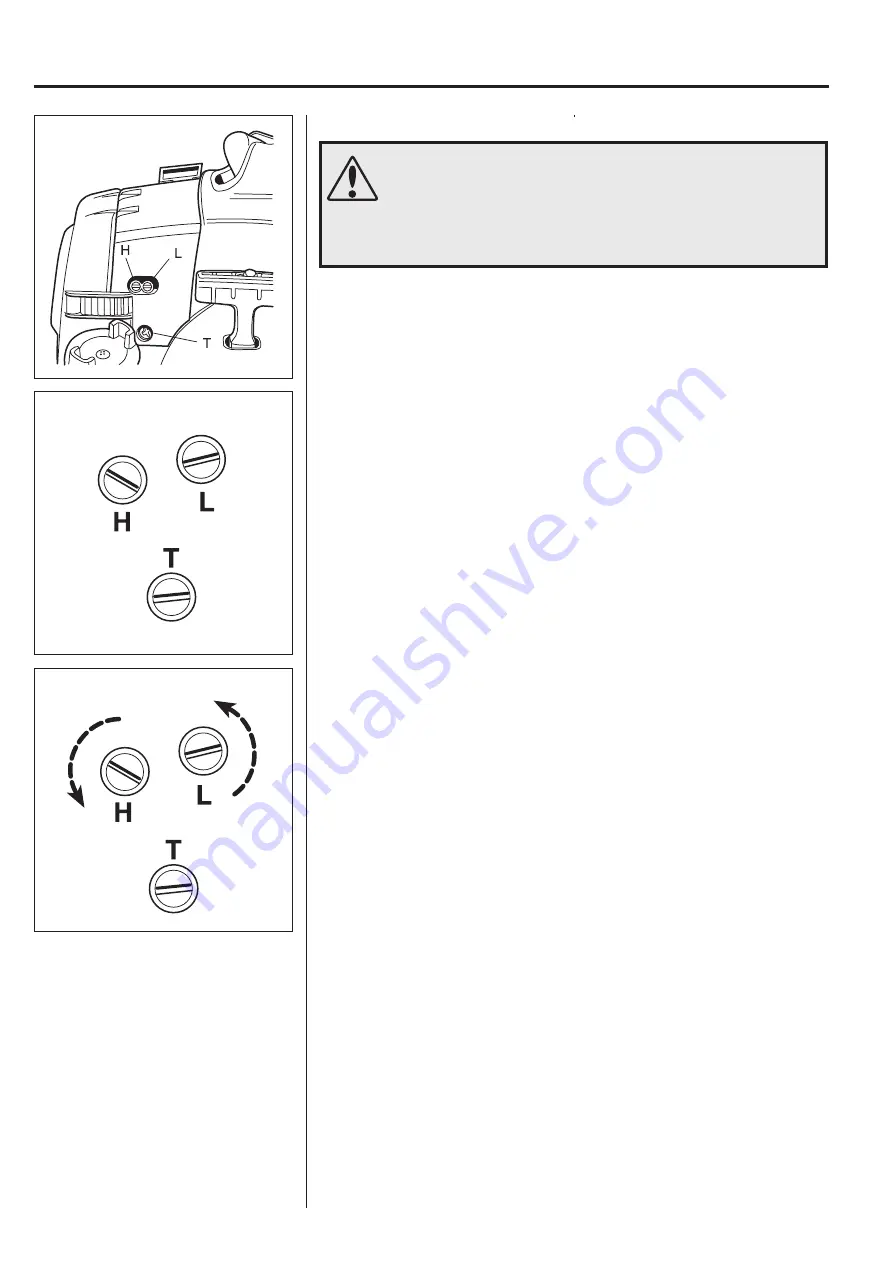
26
3
Fuel system
Carburettor settings
WARNING!
When testing the engine in connection with carburettor
adjustment, the clutch and clutch cover must be mounted
together with the shaft and angle gear under all circumstances
Otherwise there is a risk of the clutch becoming loose resulting in
serious personal injury.
The needles must be correctly adjusted in order for the engine to give maximum
power at different speeds, run steadily while idling and to react quickly when
accelerating.
The setting of the carburettor can vary a little depending on the humidity, tempera-
ture and air pressure.
L = Low speed needle
H = High speed needle
T = Idle adjustment screw
•
The fuel quantity in relation to the air flow permitted by the throttle opening is
adjusted by the L and H jets. Turning the needles clockwise gives a leaner fuel
mixture (less fuel) and turning them anticlockwise gives a richer fuel mixture (more
fuel).
A leaner
mixture gives
higher
revs while
a richer
mixture gives
less
revs.
•
The T-screw regulates the position of the throttle while the engine is idling.
Turning the screw clockwise gives a higher idling speed while turning it anti-
clockwise gives a lower idling speed.
Basic setting
The carburettor is set to its basic setting when test run at the factory. The basic
setting is “richer” than the optimal setting (fast idle speed is 600–800 rpm under the
recommended max. speed) and should be kept during the engine’s first working
hours. Thereafter the carburettor should be fine tuned.
The default setting is:
H =
2
revolution open
L = 1
,5
revolution open
Function
The carburettor has the task of supplying a combustible fuel/air mixture to the
cylinder.
The amount
of this mixture is controlled by the throttle.
The mixture’s composition
of fuel and air is controlled by means of the adjustable
“H” and “L” needles.
Fine adjustment
Fine adjustment of the carburettor should be carried out after the engine has been
“run-in”.
•
The air filter should be clean and the cylinder cover fitted when all adjustments
are made.
First adjust the L-needle, then the H-needle and finally the idling speed’s T-
screw.
Idling speed = 2,800 rpm.
•
Since the ignition system is limited in terms of rpm, the pre-programmed fast
idle speed (12,500 rpm) cannot be exceeded even if the H-needle is screwed
inwards. The risk in this case is still that the engine breaks down as a result of a
too lean fuel/air mix.
•
At full throttle, the H-needle shall have a setting so that the engine is almost
splutters.
Summary of Contents for 333R
Page 1: ...Workshop manual 333R 335R English ...
Page 2: ......
Page 36: ...34 4 Centrifugal clutch ...
Page 40: ...38 5 Angle gear ...
Page 50: ...48 6 Cylinder and piston ...
Page 60: ......
Page 61: ......
Page 62: ...2005W23 115 00 92 26 ...

